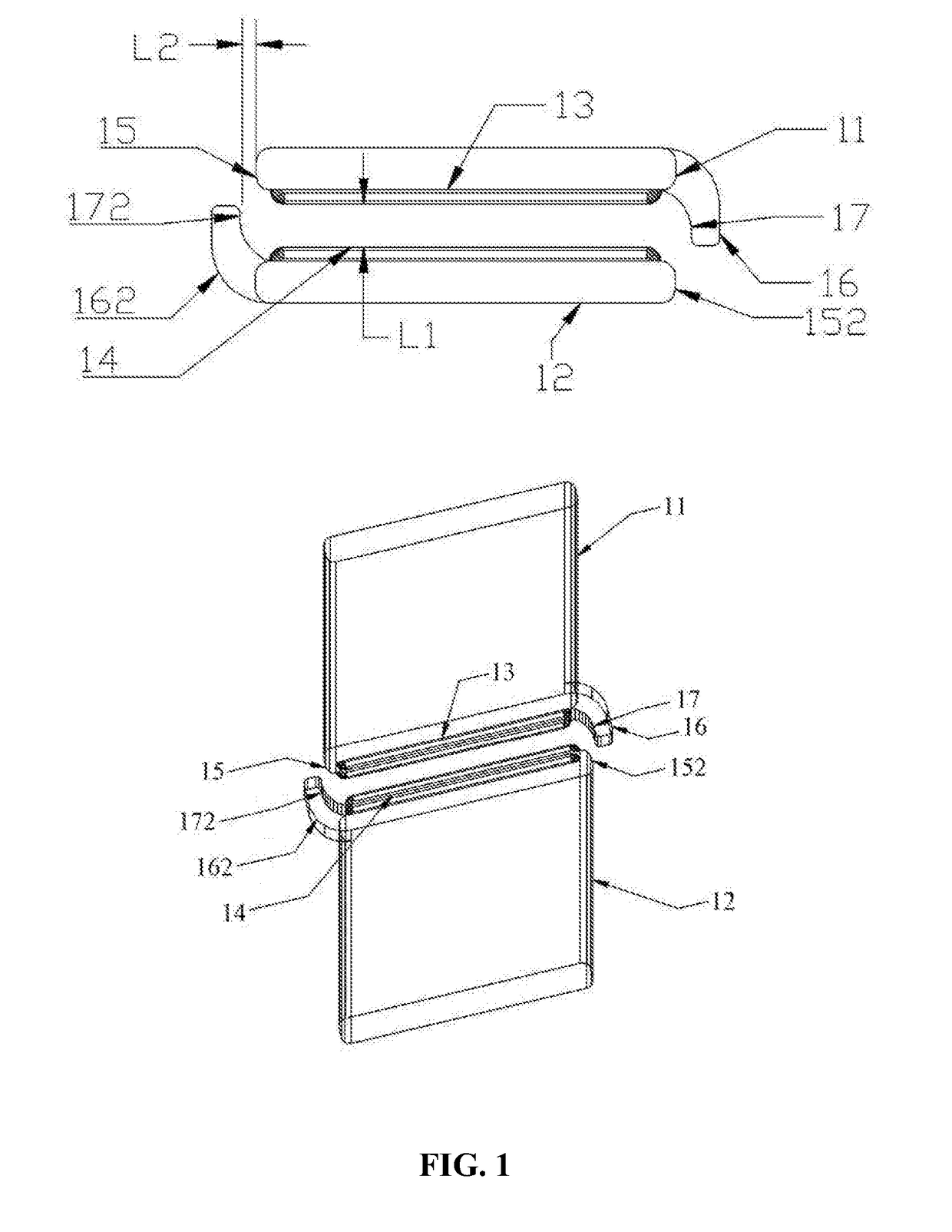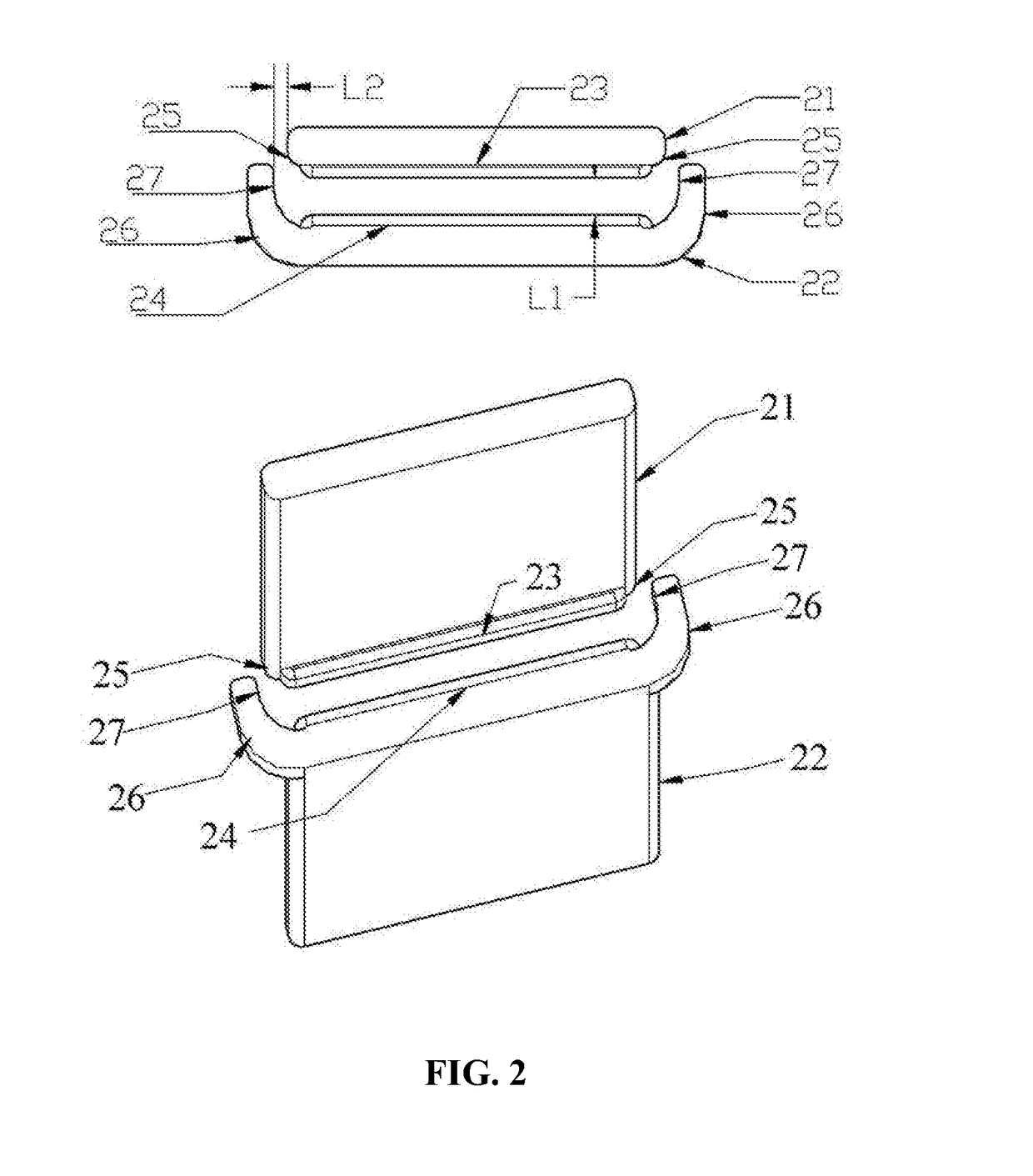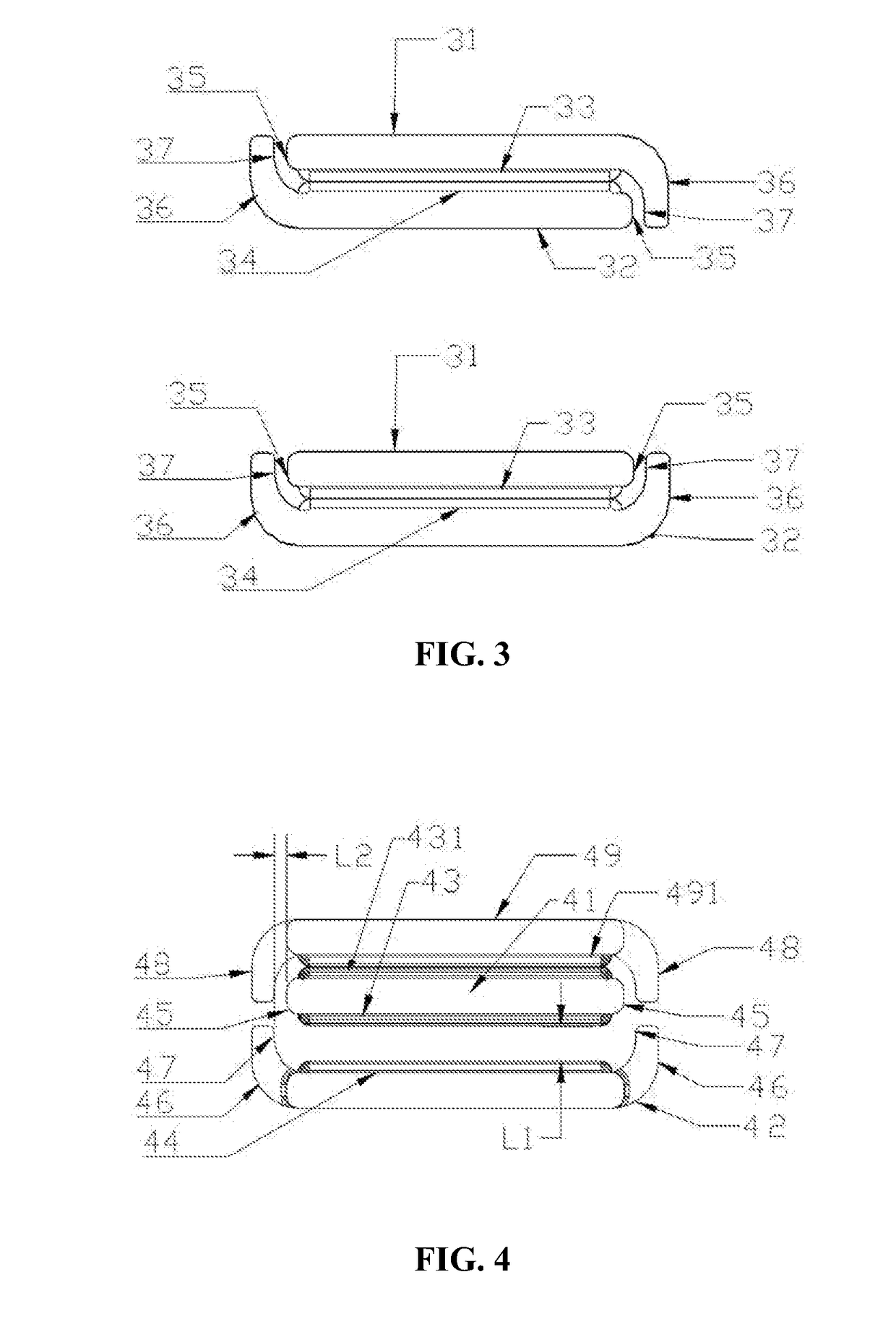Heavy current reed switch contact structure
a reed switch and heavy current technology, applied in the field of switch contacts, can solve the problems of arc-extinguishing devices that cannot be installed, switch contacts are burned, and the contact is not adhered to the surface, so as to increase the electric charge carrying ability of magnetic reed switches, reduce the damage of contact surfaces, and increase the electric charge carrying ability of reed switches
- Summary
- Abstract
- Description
- Claims
- Application Information
AI Technical Summary
Benefits of technology
Problems solved by technology
Method used
Image
Examples
example 1
[0017]FIG. 1 shows a heavy current reed switch contact, which is a normally open structure. The reed switch contact comprises at least one pair of elastic reed electrodes (11, 12), or at least one fixed electrode (12) and one elastic reed electrode (11). The electrodes (11, 12) are made of conducting materials and the surfaces of one end of the electrodes overlap. The opposite sides of the overlapped ends comprise contacts (13, 14). The end of the reed electrode (11) in the vicinity of the contacts comprises a first protruding arc discharge device (16). The end of the other reed electrode (12) in the vicinity of the contacts comprises a second protruding arc discharge device (162). There is a gap between the reed electrode contacts (13, 14). The front distance (L1) between the electrode contacts (13, 14) and the distance (L2) between the side shoulders (15, 152) of the contacts and the shoulders (17, 172) of the arc discharge device are determined by relevant working parameters such...
example 2
[0020]FIG. 2 shows a heavy current reed switch contact which is a normally open structure. The reed switch contact comprises at least one pair of elastic reed electrodes (21, 22), or at least one fixed electrode (22) and one elastic reed electrode (21). The electrodes (21, 22) are made of conducting materials and the surfaces of one end of the electrodes overlap. The opposite sides of the overlapped ends comprise contracts (23, 24). The end of the reed electrode (22) in the vicinity of the contacts comprises a protruding arc discharge device (26). There is a gap between the reed electrode contacts (23, 24). The front distance (L1) between the electrode contacts (23, 24) and the distance (L2) between the side shoulder (25) of the contact and the shoulder (27) of the arc discharge device are determined by relevant working parameters such as the specific breaking current and voltage and breakdown voltage. The front distance (L1) between contacts in a static break state is larger than t...
example 3
[0022]FIG. 3 shows a heavy current reed switch contact which is a normally closed structure. The reed switch contact comprises at least one pair of elastic reed electrodes (31, 32), or at least one fixed electrode (32, 31) and one elastic reed electrode (31, 32). The reed electrodes (31, 32) are made of conducting materials, and the surfaces of one end of the electrodes overlap. The opposite sides of the overlapped ends comprise contacts (33, 34). The end of the reed electrode (31, 32) in the vicinity of the contacts comprises a protruding arc discharge device (36). The end surfaces of the reed electrode (31, 32) overlap. The two electrode contacts (33, 34) are in a closed state.
[0023]The transformation process of the two electrodes (31, 32) between a closed state and an open state and the movement process of the electric arc between the contacts are similar to the open and closed processes in Example 1.
PUM
 Login to View More
Login to View More Abstract
Description
Claims
Application Information
 Login to View More
Login to View More - R&D
- Intellectual Property
- Life Sciences
- Materials
- Tech Scout
- Unparalleled Data Quality
- Higher Quality Content
- 60% Fewer Hallucinations
Browse by: Latest US Patents, China's latest patents, Technical Efficacy Thesaurus, Application Domain, Technology Topic, Popular Technical Reports.
© 2025 PatSnap. All rights reserved.Legal|Privacy policy|Modern Slavery Act Transparency Statement|Sitemap|About US| Contact US: help@patsnap.com



